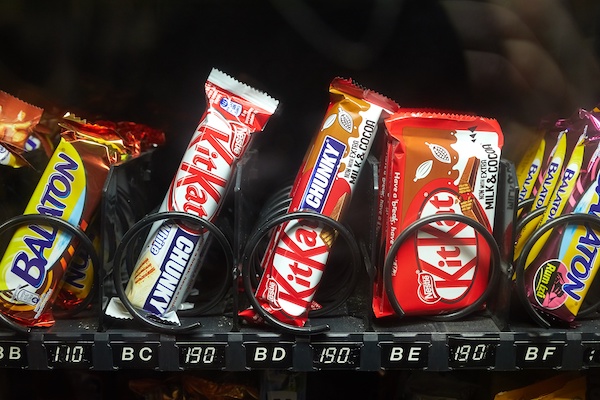At USA Technologies, we watch vending trends closely. One trend, in particular, that continues to gather attention is healthy vending. According to the Snack Food Association, 74 percent of consumers “are trying to eat healthier,” while 65 percent eat specific foods with weight loss in mind. Additional research compiled by the Center for Science in the Public Interest found that sales of healthier snacks are outpacing traditional snack foods by 4 to 1, and contribute to increased sales growth and profits for food companies. And companies like PepsiCo are jumping on the healthy vending bandwagon with programs like the “Hello Goodness,” initiative which will place several thousand themed vending machines throughout the U.S. in 2016 and in a variety of locations, including healthcare, recreational, transportation, governmental, workplace and educational facilities.
When public attitudes toward healthy vending started changing in recent years, Frances McMath, co-owner of Louisiana-based M&M Sales Company (one of the largest vending franchises in the country) immediately recognized a paradox in their business model.
While M&M was committed to offering healthier choices for consumers (for all of the right reasons, including changing preferences and customer requests) with 40 years of experience in the vending industry, McMath realized that her current group of core consumers still craved sweets and salty snacks. They noticed a disconnect between the trend line and the demographics that these new healthy choices were appealing to.
Then the a-ha moment came! People who carried cash, an older generation with expectations rooted in “old-school” vending, were not attracted to the healthier choices. However, consumers who wanted the healthier choices were primarily young, health conscious, increasingly female, and didn’t carry cash.
If M&M wanted to satisfy their clients’ demand for healthier choices, they needed to enable consumers from every demographic to buy what they wanted from their machines, and sell those – typically more profitable – healthy items to employees, M&M would have to up its cashless acceptance capabilities, in a big way. That being said, they couldn’t just accept credit and debit cards – they also needed to explore mobile payment options as they too were becoming a larger part of this younger market’s payment preferences.
The company committed to outfitting 2,500 of its machines with cashless acceptance technology in 90 days, and the results were immediate. Soon after those machines were connected to the ePort Connect Service, and despite a sluggish economy, M&M’s same-store sales rose by 22 percent.
Today, cashless payment capabilities, mobile wallet acceptance and healthier options are making a huge impact on the industry. Operators are able to market directly to consumers through interactive, web based loyalty programs. Higher-end consumers are becoming the norm and Gen X, Y and Z can be found everywhere: schools, workplace, travel and entertainment destinations. Meeting the demand of those sought-after consumers means not just offering the range of products that they are looking for, but also making it easy for them to buy with whatever payment mechanism they choose (hint: it’s not cash). Today’s high-tech consumer is also experience-focused. They gravitate towards the bright-shiny machines that actively court consumers and drive purchasing decisions through colorful displays, scrolling messaging and timed incentives displayed on their mobile devices. Additionally, more consumers than ever before are taking healthy vending into their own hands by lobbying for a range of healthier options such as fiber bars, dried fruit, water and drink options, making operators re-think the unattended model and think more like traditional retail establishments.
As McMath says, “Vending has changed. It needs to be fun, it needs to be interesting, it needs to be healthy – and it STILL needs to be quick and easy.”
Healthier choices, which have shorter shelf lives than traditional, pre-packaged foods have made the business proposition a little more complex but the flip side is that it offers an opportunity for well organized and strategic operations to introduce new menu items like bars and healthy drinks that come hand-in-glove with higher ticket prices.
Modern technology has allowed the vending industry to evolve into a just-in-time, supply-chain supplicant that uses automated inventory tracking and telemetry data to ensure that operators get the right product to its consumers at exactly the right time. M&M Sales company is just one example of a savvy operator that recognized the trend, identified ePort Connect as the best possible solution and collaborated with the team at USAT to make it a reality.
